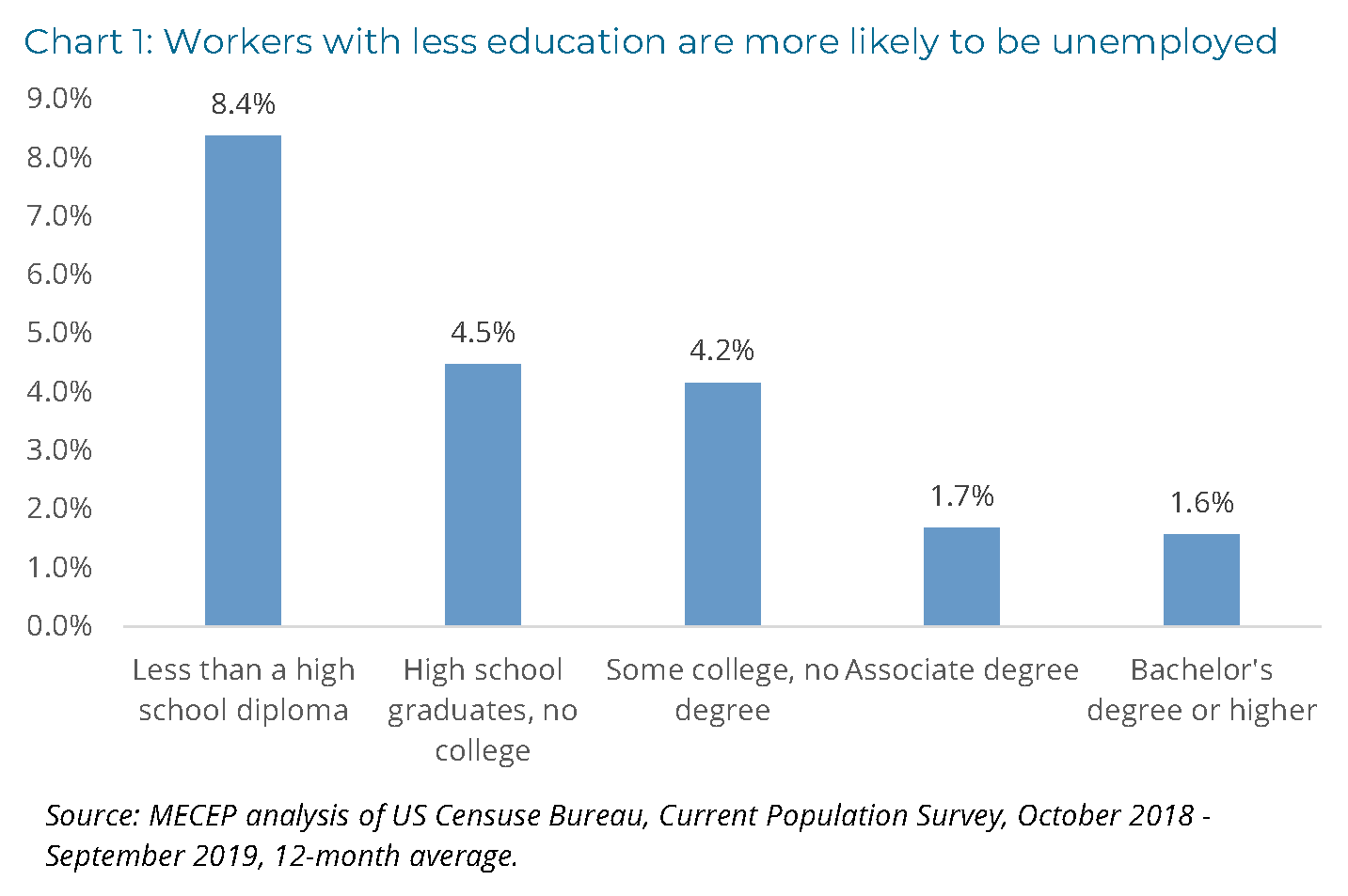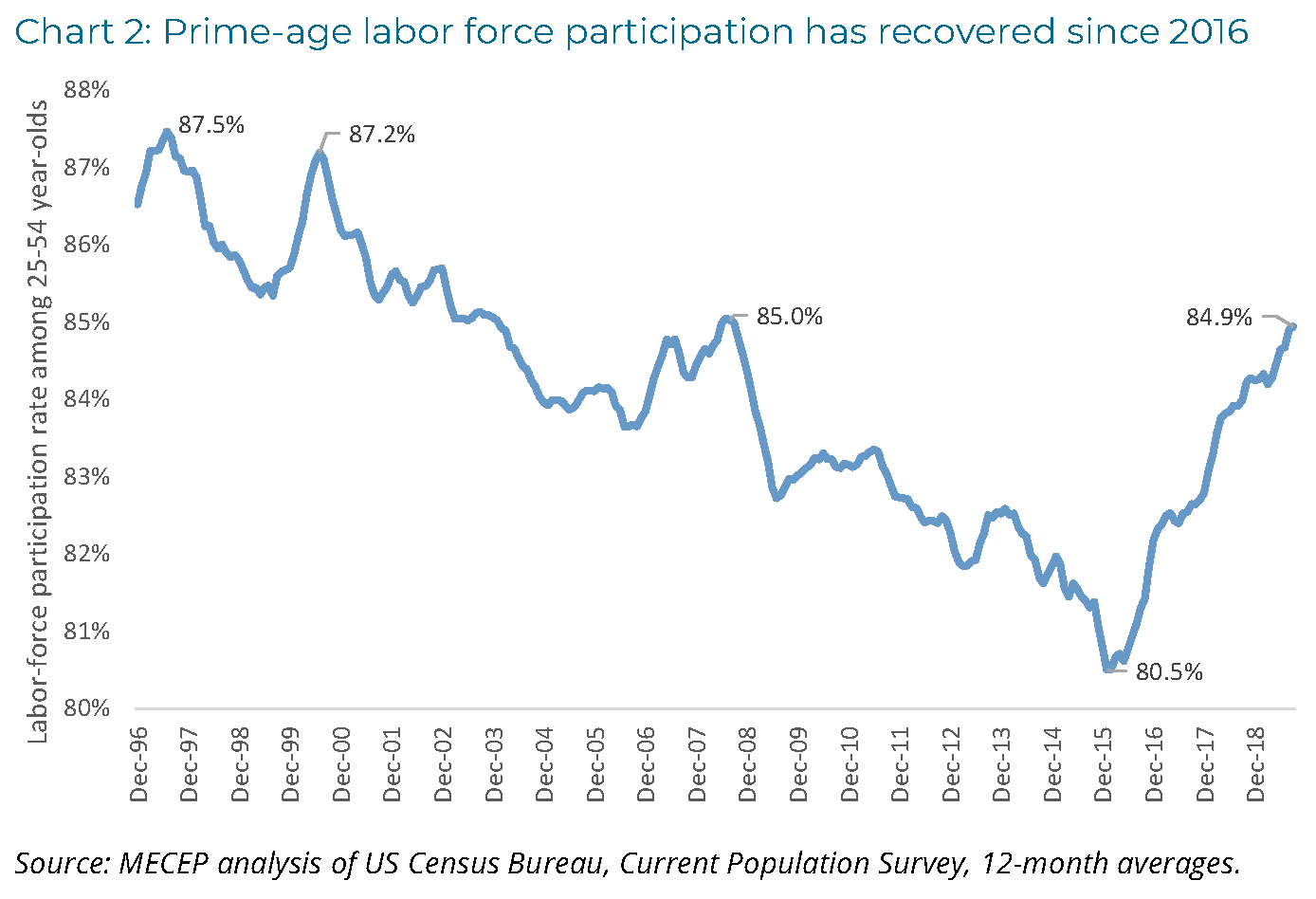The US Bureau of Labor Statistics recently released estimates showing that Maine’s unemployment rate was a seasonally-adjusted 2.9 percent in September, marking three consecutive months of the lowest statewide unemployment rate on record since 1976. This suggests that Maine’s labor market is tightening, and anecdotally, some businesses are reporting that workers are harder to find or retain.
A deeper look at Maine’s employment data suggests a path forward. Employers that welcome workers regardless of race or educational level and observe hiring and training practices that recognize the barriers they face will have a larger pool of workers to draw from.
Who are Maine’s unemployed workers?
Workers of any background can become unemployed. However, the job market favors white workers and workers with higher levels of education, creating barriers that make less-educated Mainers and Mainers of color more likely to be out of work.
Mainers without a high school diploma or equivalent are twice as likely to be unemployed as workers with a high school degree, and four times more likely to be out of work than Mainers with associate’s or bachelor’s degrees. The higher difficulty that less educated workers face in finding and keeping work compounds the barriers to getting back into school; Without reliable hours and decent pay, the cost of higher education or even GED courses become an even greater obstacle to overcome.
Maine’s labor market also favors white workers over people of color. Barriers such as discrimination, a lack of affordable health care, and previous involvement in the criminal justice system (which disproportionately polices and imprisons people of color) all make it harder for people of color in Maine to obtain and keep jobs.
As a result of those barriers, people of color are more than twice as likely to be unemployed as whites in Maine. For the year ending September 2019, the unemployment rate for white non-Hispanic Mainers was 2.9 percent. For people of color, it was 6.4 percent.
There’s room in Maine’s labor market for more workers
The additional capacity in Maine’s labor market is also evident in data regarding the share of prime-age workers — those between 25 and 54 years old — who are employed or looking for work.
In a strong economy, one would expect a large share of this population to be in the labor market. Indeed, in the late 1990s, more than 87 percent of prime-age Mainers were working or looking for work.
The labor force participation rate among prime-age Mainers entered a long-term decline beginning with the recession of 2001. The decline was a reversal of decades of increasing prime-age participation. By November 2008, the prime-age participation rate had begun to recover but was still only at 85 percent. In the wake of the Great Recession, it plummeted to just over 80 percent March 2016.
Since then, the most remarkable story in Maine’s labor market has not just been the low unemployment rate, but the steep recovery in labor force participation among prime-age workers. In the 12 months ending September 2019, the prime age LFPR averaged 84.9 percent — putting this indicator back at 2008 levels for the first time.
If prime-age labor force participation were to return to the record high at the turn of the century, Maine could see another 12,000 prime-age workers back in the labor force.
Conclusion
Maine’s sustained growth in labor market participation has coincided with periods of strong wage growth, particularly for Mainers in low-paying jobs. Both those trends are good news for Maine’s low- and moderate-income workers, but they tell only part of the story.
A fuller account of Maine’s labor market reveals that many Mainers — particularly people of color and people with lower education levels — still face barriers to finding and keeping a job. A historic view of Maine’s labor market reveals there are workers who can be brought back into the labor force, providing a ready solution to employers that report trouble filling vacancies.





